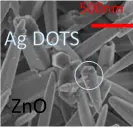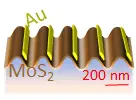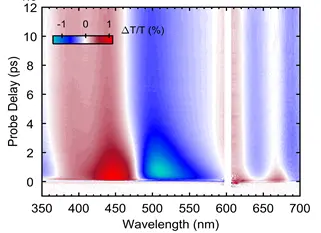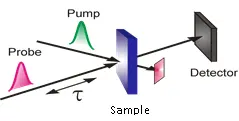Ultrafast spectroscopy in hybrid systems: metallic nanoparticles/semiconductors
Ultrafast spectroscopy in hybrid systems: metallic nanoparticles/semiconductors
Study of ultrafast dynamics in hybrid systems: metallic nanoparticles coupled to semiconductors
Particles and metallic nanostructures have plasmonic behaviors that lead to the enhancement of the electric field and the generation of hot electrons. These effects can be used to increase the signal and response of photovoltaic, photocatalytic and, more generally, optoelectronic devices. For this purpose, the nanostructures are manufactured to have the appropriate plasmonic resonances and coupled to optoelectronic materials such as semiconductors or transparent conductive oxides.
A new class of semiconductors is emerging as good candidate for future device generation in this field. In particular, semiconductors formed by few atomic layers (2D materials), such as MoS2, and other materials such as ZnO or TiO2 are promising for the applications mentioned above.
Properly engineered coupling between these materials and metallic nanostructures can lead to improvements in terms of light collection, generation and transfer of charges and energy. The physical phenomena are complex. Their understanding is subject of study and attention by many research centers, and is essential for maximizing device performances.
The thesis consists in an experimental study of the phenomena that follow photo-excitation. The aim is to understand the processes of charge and / or energy transfer and those related to hot electrons. These processes take place on time scales of the fs-ps. We will therefore use techniques based on short duration laser pulses (fs), in particular the pump-probe technique.
The experimental activity takes place at the laboratories of the Physics Department of the Politecnico di Milano.
Contacts:
Prof.ssa Margherita Zavelani-Rossi (02 2399 6069, margherita.zavelani@polimi.it)




